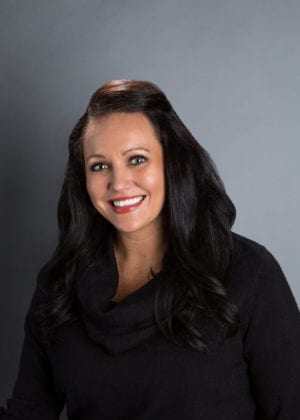
Wow! What a crazy year 2017 has been. As it quickly comes to a close, my team has been busy here at Integrative Myofunctional Therapy!
Many of you already know that I am an educator, speaker, writer, mentor and business consultant. This year I was asked to further develop my coaching and mentoring program to teach more about myofunctional therapy. After careful consideration, it only made sense considering I have a long history in dental hygiene and myofunctional therapy….and I have a M.B.A (Master’s in Business Administration) to support teaching the business side of owning a myofunctional therapy practice.
The Myo Mastery Program was born! I will experiment with 10-week and 8-week courses, plus a 3-day weekend course. These courses all have similar hours of instruction, it just really depends on how you learn. If you’re like me, you want to jump in with both feet, learn quickly and then put it into application. Others like to learn at a slower pace.
And as if that wasn’t excitement enough, I will also be teaching my first Myo On Location program in early 2018! The Myo On Location Program was designed to teach a large student organization, but has recently been requested to come teach an entire dental office about the ins and outs of myofunctional therapy. I’m very excited that it’s becoming more and more understood. But there is still plenty of education to be done!
IT TAKES A VILLAGE
I have very strong feelings that the Dental Hygienist is the person who can ultimately spread the word about myofunctional therapy and the problems associated with orofacial myofunctional disorders. Others have reported that the dentist is the most crucial point of contact, but I respectfully argue that it’s the hygienist.
I don’t know about anyone else, but when I look back and evaluate the dentists that I’ve had the pleasure (and displeasure…..) of working with, I can’t think of very many that were truly “tuned” into the patient beyond the usual dental concerns. No one ever caught the tongue-tie. No one ever asked probing questions about snoring and obstructive sleep apnea. No one really ever cared about mouth breathing. Not very many understand the importance of evaluating the airway or the difference between orthotropic orthodontics vs. functional orthodontics. How about thumb sucking or toxic oral habits? I repeatedly heard dentists tell the parents “that we will worry about that habit when the permanent teeth are in, if it hasn’t been stopped”. OMG!! I was cringing behind my mask.
In contrast, as a hygienist, I know that we are the ones who are seeing the families and introducing the youngest sibling to the dental process. We do the happy visits and have the opportunity to educate and visit with parents. We have the opportunity to talk with mom about Billy’s severe tongue-tie. We have the opportunity to also let mom know that other siblings might also have the same concern. The opportunities are there. The question is who is taking that opportunity?
WHY EVERY RDH SHOULD UNDERSTAND MYOFUNCTIONAL IMPAIRMENT
I’ve worked in practices with multiple hygienists, and I was literally the only one having conversations about mouth breathing, snoring, enlarged tonsils, tongue-ties and speech concerns. Why? It’s not because they were terrible practitioners, it’s simply because it was never part of their training and they have no idea myofunctional therapy is a thing! Now, don’t get me wrong, I know we all get different educations, but I haven’t heard from very many hygienists who learned about myofunctional issues in school. And those who did just learned about it briefly.
Myofunctional therapy is a scope of practice for dental hygienists and I feel that at a minimum, dental hygienists should be able to identify orofacial myofunctional disorders and myofunctional impairment, and be able to have a conversation with a patient. The information doesn’t need to be shoved down their throat, but just like it’s our job to identify periodontal disease and oral cancer lesions, I think it’s our job to at least tell a patient we notice they have a severe tongue-tie, or why it’s bad for our body to mouth breath.
HOW TO EDUCATE THE OFFICE
In an office, the dental hygienist(s) is the person who looks in all the mouths. The hygienist(s) see the mom, dad, brother, sister, and so on. They learn the details of those families and their mouths. The opportunities that I spoke of above…here they are! Each hygiene appointment is the opportunity to look, evaluate and have a conversation with a patient. You’d be surprised how many times I have been filling in at an office and I see a nine-year-old boy with a classic, severe tongue-tie. When I bring mom back and show her and talk about the need for a frenectomy, she is floored. And angry. Why hadn’t the hygienist who looks in her son’s mouth every six months mentioned this?
You’re asking how to educate the office? I always recommend that the hygienist and the dentist have a conversation and get everyone on board. I’ve assisted with lunch and learns, I’ve talked at staff meetings. I’ve always stressed that I wasn’t asking them to spend a ton of time screening or answering detailed questions. Rather, I was asking them the refer the question to me so that I could answer it properly and give it the priority that it needed! Essentially, all I was asking them to do was not let the myofunctional issues fall through the cracks, and go undiscussed.
I also think that there are some minimum things that should be done with certain services provided in an office. Is your office selling products like Invisiline or another straightening program? Does the dentist check for a tongue-tie or tongue thrust before selling the program to the patient? In an ideal world, the dentist / hygienist selling the product would understand that a tongue-tie and the resulting tongue thrust could very well impact the success of the treatment. What about clenching and grinding? If your office routinely puts a patient in an appliance for clenching and grinding, it would be beneficial to understand that a common symptom of a tongue-tie is clenching and grinding. And lastly, what about those snoring appliances? Sleep disordered breathing is serious (as in can be deadly) business and many offices dabble in “sleep dentistry” without completely understanding the importance of finding root cause resolution not just a band aid. I’ve witnessed many dentists offer to make a snoring device without ever having a conversation about the severity of it. Without ever discussing whether that patient needs a referral to be tested for obstructive sleep apnea. That can be a deadly oversight.
All in all, having someone in the office who is knowledgeable in myofunctional disorders and can gently encourage the office to “treat the patient as a whole, not just a mouth” is very important. This can be achieved by having a dental hygienist who has received myofunctional training.
HOW TO BECOME A MYOFUNCTIONAL THERAPIST
Myofunctional therapists receive their training in a variety of ways. Some people start with an intensive 4-day course. Some prefer to learn a little bit slower and others like a combination. There is no governing body for myofunctional therapy, so there isn’t a right or wrong answer to how you get your training. Some agencies offer a certification program, but it is important to understand that extensive process is not mandatory unless that’s the route you’d like to take!
It’s important to also know that you can either practice myofunctional therapy privately, start your own business or you can incorporate it into the dental practice where you currently work. Some dental hygienists simply take a course to get basic knowledge to provide better care for their dental patients.
HOW ARE THE COURSES COMPLETED?
The courses are hybrid in design. I evaluated many different platforms to deliver the Myo Mastery Program and I wanted something that would have minimal technical issues and maximal flexibility. So, for that reason, we will meet via conference call as well as sometimes live online! Each person will receive their entire training course and will be able to follow along with their material while on the conference call. In the event that someone is driving or away from home, they can at least call in and be part of the conference call, even if they do not have access to a computer. Another bonus…all calls are recorded so you can go back and revisit a call if you need to. If you miss a class…no big deal. You can catch up in time for the next scheduled class!


